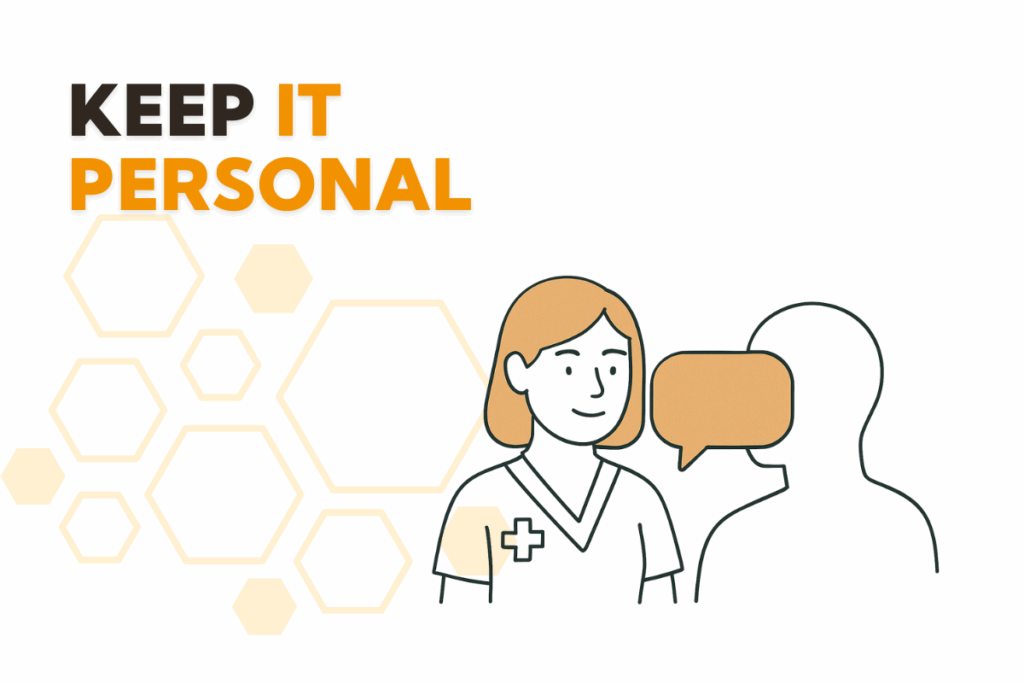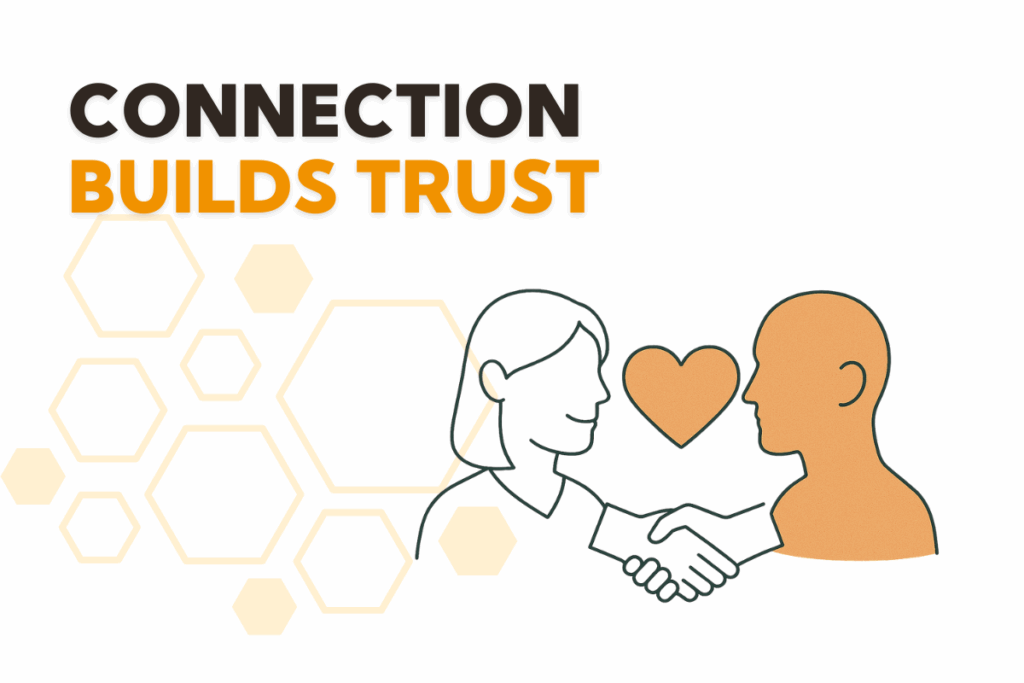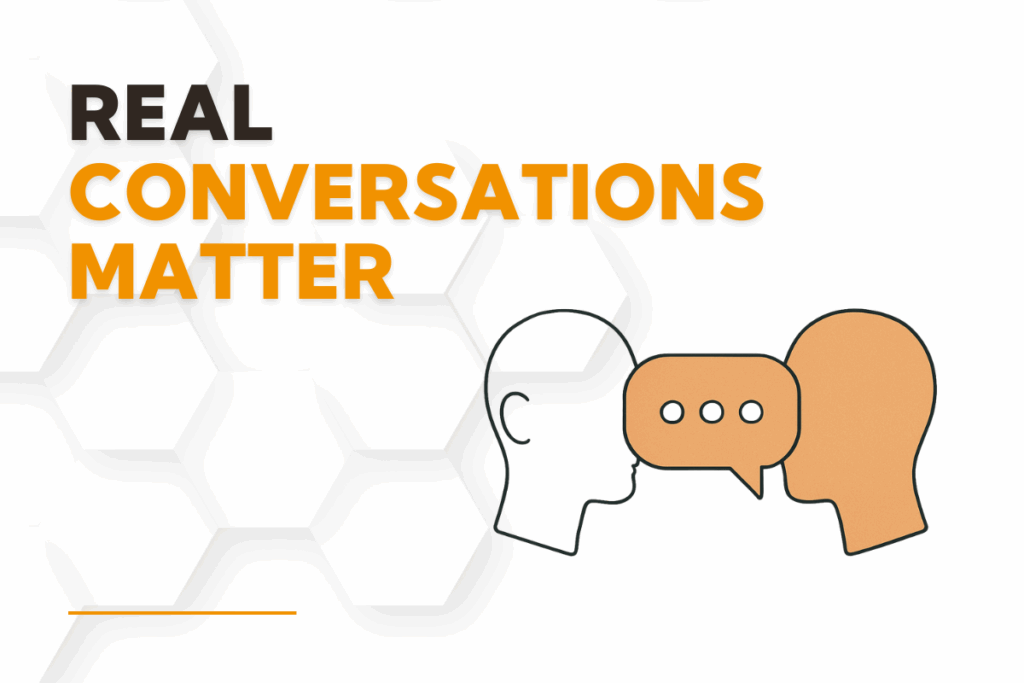Bridging the Gap Between Automation and Human Connection in Massage Clinics
If a client’s asked whether they’re talking to a real person, you’re not alone. This article helps massage clinic owners create a messaging experience that feels efficient and deeply human—without sacrificing time or trust.
That Question Hits Deeper Than You Think
Imagine this: a new client messages your clinic to reschedule, and your automated reply instantly sends the correct cancellation policy. But instead of a thank you, you get this:
“Is this a real person?”
You wrote the template. Fine-tuned the tone. You are real—and so is your team. But in that moment, your client feels disconnected.
This isn’t just about one message. It’s about a growing tension clinic owners feel every day: How do we stay efficient without sounding like bots? How do we automate without losing the warmth that makes massage therapy personal?
Why Clients Feel Uncertain About Who’s Messaging
They’re Used to Being Ghosted by Bots
Across industries, automated messages often mean no one’s listening. Clients bring that baggage with them when reaching out—even to service-based businesses like yours. If your reply sounds generic, impersonal, or “too perfect,” they may assume it’s a chatbot, even when it isn’t.
They Crave Personal Connection—Especially in Wellness
Massage is deeply personal. From the first inquiry, clients are assessing:
Can I trust this space? Will I be heard? Am I safe here?
When early communication feels cold or robotic, it puts them on edge.
Tone Matters More Than Timing
A fast reply that sounds stiff can feel worse than a slow one that feels kind. Clients don’t just want fast information—they want to feel seen.
How This Affects Your Bookings and Retention
Clients who feel unsure about their interactions are less likely to book, rebook, or refer. One awkward text thread can unravel the rapport you’ve worked hard to build.
Automation is necessary to scale, but when it leaves clients questioning whether a human is even involved, it risks damaging the trust that brings them back.

Standards for Warm, Trust-Building Automation
Be Upfront About What’s Automated
Use transparent language like:
“This message is automated, but we’re reviewing your request and will follow up shortly.”
It signals organization and care.
Personalize Using the Tools You Already Have
Even when using templates, include the client’s name, the therapist’s name, and the session type if possible.
Example:
“Hi Jenna, we’re confirming your 60-minute deep tissue session with Michael this Thursday at 2:00 PM.”
This kind of message—easily generated through online appointment scheduling software—retains your voice while automating the process.
Keep the Language Conversational
Use natural phrasing, contractions, and warmth. Avoid overly formal phrases like “Kindly be advised” or “Per our policy.”
Example:
“We got your message—thanks for letting us know! We’ll follow up shortly.”
Simple Workflow to Humanize Your Clinic Communication
Step 1: Map Out Which Messages to Automate
Start with low-emotion, repetitive tasks like confirmations, reminders, or cancellations. Leave space for real conversations when nuance is needed.
Step 2: Build Friendly Templates with Context Tags
Use your software’s merge fields to insert client names, therapist names, or appointment types. This makes every automated reply feel personalized.
With tools like business automation for massage clinics, you can do this at scale—without losing your personal touch.
Step 3: Add Transparency to Every Automated Reply
Begin with a short statement like:
“This message was sent automatically to keep things moving quickly—we’re still here and will check in if needed.”
Step 4: Route Real Conversations to Real People
Set rules that escalate client questions (especially ones containing stress, pain updates, or confusion) to a team member.
Step 5: Test, Tweak, and Train
Review outgoing messages monthly. Tweak tone based on client feedback. Train staff to jump in when automation isn’t enough.
Therapist-Tested Message Templates That Feel Human
Here are a few examples our community members have used successfully:
Booking Confirmation
“Hi Sarah, you’re all set for your massage with Jamie on Tuesday at 4:15 PM. Looking forward to seeing you!”
Auto-Reply While You’re Offline
“Thanks for reaching out! This message is automated so you’re not left hanging—we’ll follow up in person when we’re back online.”
FAQ Response with Empathy
“Totally get the question—yes, this is our real team! We use templates to speed things up, but we’re always here if you need us.”
When to Let a Real Human Take Over
Red Flags That Signal It’s Time to Intervene
- Client expresses confusion: “This doesn’t make sense.”
- Emotional cues: “I’m nervous,” “This is my first massage,” “I’m in pain.”
- Complex needs: rescheduling due to medical issues, pregnancy, post-surgical care.
In these cases, route the conversation to someone who can respond personally. It may cost a minute or two, but the trust it builds is invaluable.

Keep Evolving Your Client Communication Flow
Track what messages lead to confusion. Audit replies where clients ask, “Are you real?” and work backward.
Ask clients during checkout or follow-up:
“Did our messages feel helpful and personal?”
The answer to that question tells you everything you need to know about your system’s tone.
With tools like reporting and analytics for massage therapy clinics, you can even spot patterns across team replies and rebook rates.
You Can Be Efficient Without Losing Your Humanity
Speed and sincerity aren’t mutually exclusive. A well-crafted message, written with intention, can be shared 100 times, so long as it still feels like it came from the heart. You don’t need to sacrifice connection for efficiency.
Your clients deserve to feel like someone’s there. And you deserve systems that help you run a business without losing the soul of your work.
These little tweaks in tone? They matter.
They’re how we keep the care in every interaction—especially the ones that aren’t hands-on.
FAQs
Usually, it’s because the tone of the message feels too polished, too fast, or too generic. Clients want to feel emotionally safe—especially in personal wellness services—so anything that feels automated can trigger uncertainty.
Use the client’s name, mention their appointment type or therapist, and add a line that shows warmth or transparency like “We’ll follow up in person soon.” Keep the tone light and conversational.
Not all of them. Automate routine tasks like appointment reminders or confirmations. But anything involving emotional nuance, questions, or client vulnerability should be handled by a real person.
Look for clinic software that offers automation with personalization options. Tools like online appointment scheduling and business automation for massage clinics allow you to scale your communication while staying human.


